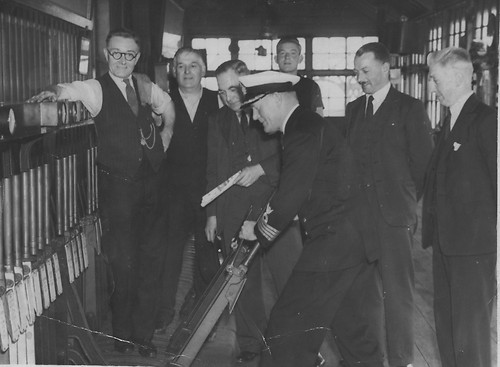 Hartlepool Sports & Leisure
Hartlepool Sports & Leisure
- Cinemas, Theatres & Dance Halls
- Musicians & Bands
- At the Seaside
- Parks & Gardens
- Caravans & Camping
- Sport
 Hartlepool Transport
Hartlepool Transport
- Airfields & Aircraft
- Railways
- Buses & Commercial Vehicles
- Cars & Motorbikes
- The Ferry
- Horse drawn vehicles
 A Potted History Of Hartlepool
A Potted History Of Hartlepool
- Unidentified images
- Sources of information
- Archaeology & Ancient History
- Local Government
- Printed Notices & Papers
- Aerial Photographs
- Events, Visitors & VIPs
 Hartlepool Trade & Industry
Hartlepool Trade & Industry
- Trade Fairs
- Local businesses
- Iron & Steel
- Shops & Shopping
- Fishing industry
- Farming & Rural Landscape
- Pubs, Clubs & Hotels
 Hartlepool Health & Education
Hartlepool Health & Education
- Schools & Colleges
- Hospitals & Workhouses
- Public Health & Utilities
- Ambulance Service
- Police Services
- Fire Services
 Hartlepool People
Hartlepool People
 Hartlepool Places
Hartlepool Places
 Hartlepool at War
Hartlepool at War
 Hartlepool Ships & Shipping
Hartlepool Ships & Shipping

Special Visitor to Newburn Signal Box
What we know about this image :
The Captain of H.M.S. Diadem, on a courtesy visit to the town in 1947, operates the points in Newburn Signal Box, with local lad Alexander Waterland standing right at the back.
Top to bottom, left to right
Row 1
- Signalman C. Rogers
- Signalman J. Laws
- Stationmaster J. Dennis
- Capt. F.A. Walton, RN
- Signal lad Alexander Waterland (at the back)
- D. Jones, MP for Hartlepool
- C. Roberts, District Goods & Docks Manager
Row 2
- person's name
- person's name
- person's name
Row 3
- person's name
- person's name
- person's name
Donor : Mr. Alexander Waterland
Location
Related items :
 Royal Navy - peacetime
Royal Navy - peacetime
Images and documents relating to service men and women serving with the Royal Navy in times of peace.
More detail » Stations and Signal Boxes
Stations and Signal Boxes
Most of these images are of Hartlepool (prior to 1967 West Hartlepool) Station.
'OLD' HARTLEPOOL STATION. The first Hartlepool station was opened around 1840 and according to Robert Wood's book 'West Hartlepool' p.24, appears to have been part of a Dutch ship brought onto land. The cabins housed the Booking Clerk and Station Master. The first proper station building was located at the junction of Commercial Street and Bond Street. It can be seen on old maps as a curved building, to the north of the fish quay, and is often labelled as a Goods' Shed. The later station opened to the west of this in Northgate in November 1878. It was also at this time that a new direct line to West Hartlepool opened. There had been an earlier line which crossed the Slake over sluice gates but this was cut to make an entrance to the Coal Dock. For many years after WW2, Hartlepool Station passenger service was solely for school trains from the colliery towns which carried Henry Smith School pupils. It was closed in 1964 after the 1963 Beeching Act, which resulted in the closure of the Easington, Horden and Blackhall Stations. Children from then onwards were brought into the town by bus.
WEST HARTLEPOOL STATION. West Hartlepool's first station was at the end of the line from Stockton in Middleton. Trains then halted at Stranton station, which was in Mainsforth Terrace close to Burbank Street. The next station built was opposite the old Custom House which is in Victoria Terrace, now part of Hartlepool Marina area. Next a large station, called the Leeds Northern Station, was opened in 1853 in Mainsforth Terrace and photographs of this station can be seen below. It was not until 1878 that a new connecting line meant that trains ran again between Hartlepool and West Hartlepool.
Finally the present station was opened in 1880 in Church Street and the Mainsforth Terrace station was for many years a goods' station.
West Hartlepool station became Hartlepool station in 1967 when Hartlepool and West amalgamated.
SEATON CAREW STATION. The current Seaton Carew station has been on the same site since the mid-1800s.
GREATHAM STATION. This station came after Seaton Carew on the line south. It was well away from the centre of the village and was adjacent to the Cerebos factory. For many years it was very well used as a simple route from town for Cerebos' workers. It closed in 1991.
HART STATION This station was at the north end of the town.It was at what is now the Hartlepool end of the Hart to Haswell country walk.
More detail » Waterland, Alexander
Waterland, Alexander
I was born on the 19th of May, 1930, the youngest of five children, and lived at 10 Hunter Street, West Hartlepool. My parents were William Thomas and Eva Waterland – my mother’s maiden name being Duphie.
I started work with L.N.E.R. in 1944, in the carriage & wagon works, transferring to the signal cabins in 1946. Two years later, aged 18, I was called-up for National Service, completing my Basic Training at Elgin in Scotland, serving with the Royal Engineers – Army No.22069051.
I remember completing a Bomb Disposal Course at Alford, near Skegness in Lincolnshire. This was a four-week course, although being a Private meant I didn’t learn how to diffuse bombs, only how to dig them out!
I was demobbed in 1950 and returned to my job with the railways and in 1951 I transferred to the Transport Police, initially stationed with the Hartlepool Docks & Rail Unit.
I married Maureen (Shepherd), on February 7th, 1953, at Stranton Parish Church – it was a very cold day with snow on the ground.
In 1962 I was transferred across to Middlesbrough, with four short spells in London, serving at various places including Waterloo Station and Stratford Lift; I also undertook some Royal Duties. I retired in 1985.
More detail »





